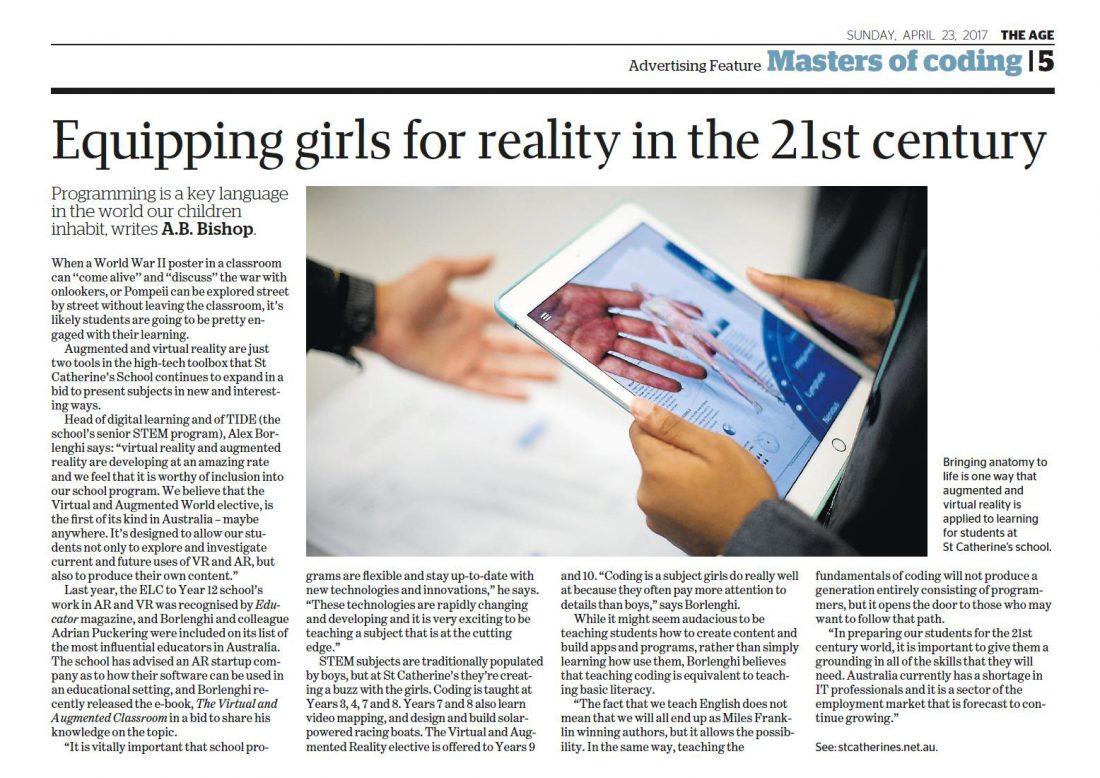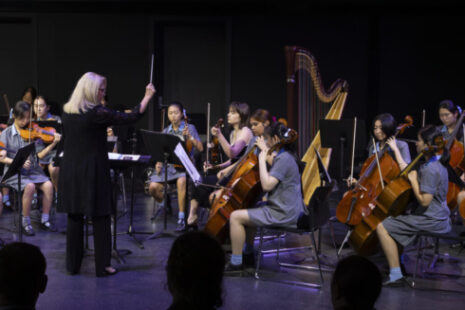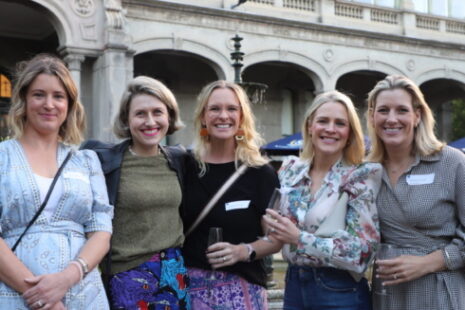Equipping girls for reality in the 21st Century

When a World War II poster in a classroom can ‘come alive’ and ‘discuss’ the war with onlookers, or Pompeii can be explored street by street without leaving the classroom, it’s likely students are going to be pretty engaged with their learning.
Augmented and virtual reality are just two tools in the high-tech toolbox that St Catherine’s School continues to expand upon in a bid to present subjects in new and interesting ways.
Head of digital learning and of TIDE (the school’s senior STEM program), Alex Borlenghi says: “Virtual Reality and Augmented Reality are developing at an amazing rate and we feel that it is worthy of inclusion into our school program. We believe that the Virtual and Augmented World elective, is the first of it’s kind in Australia – maybe anywhere! It’s designed to allow our students not only to explore and investigate current and future uses of VR and AR, but also to produce their own content.”
Last year, the ELC to Year 12 school’s work in AR and VR was recognised by Educator magazine, and Mr Borlenghi and colleague Adrian Puckering were included on its list of the most influential educators in Australia. The school has advised an AR startup company as to how their software can be used in an educational setting, and Mr Borlenghi recently released the e-book, The Virtual and Augmented Classroom in a bid to share his knowledge on the topic.
“It is vitally important that school programs are flexible and stay up-to-date with new technologies and innovations,” he says. “These technologies are rapidly changing and developing and it is very exciting to be teaching a subject that is at the cutting edge!”
STEM subjects are traditionally populated by boys, but at St Catherine’s they’re creating a buzz with the girls. Coding is taught at Years 3, 4, 7 and 8. Years 7 and 8 also learn video mapping, and design and build solar-powered racing boats. The Virtual and Augmented Reality elective is offered to Years 9 and 10. “Coding is a subject girls do really well at because they often pay more attention to details than boys,” says Mr Borlenghi.
While it might seem audacious to be teaching students how to create content and build apps and programs, rather than simply leaning how use them, Mr Borlenghi believes that teaching coding is equivalent to teaching basic literacy.
“The fact that we teach English does not mean that we will all end up as Miles Franklin winning authors, but it allows the possibility. In the same way, teaching the fundamentals of coding will not produce a generation entirely consisting of programmers, but it opens the door to those who may want to follow that path.
“In preparing our students for the twenty-first century world, it is important to give them a grounding in all of the skills that they will need. Australia currently has a shortage in IT professionals and it is a sector of the employment market that is forecast to continue growing.”




